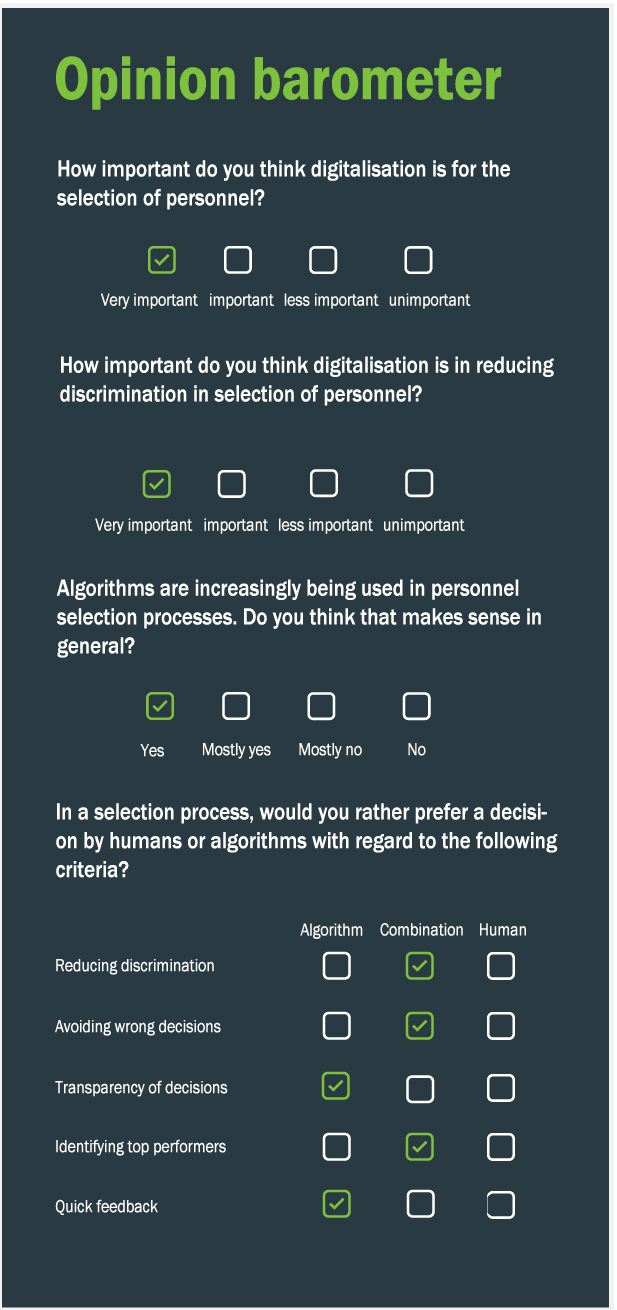Progress Thoughts: Prof. Peter M. Wald
02.10.2022
About the format:
"Fortschrittsgedanken" appeared weekly on the FAIR.nrw blog 2020 and presents the opinions of various experts from research and practice on questions that always remain the same. The primary topic is algorithms in personnel selection.

About the Author:
Peter M. Wald studied labor sciences from 1981 to 1985 and received his doctorate in 1988. From 1991, he worked in the human resources department of national and international companies and as a professor at the HTW Dresden. Since 2009, he has been Professor of Human Resources Management at the Leipzig University of Applied Sciences. He is author and co-author of various articles on the topics of Candidate Experience as well as Work 4.0 and Recruiting. In research, he is particularly interested in the use of digital media in employee management.
What opportunities do algorithms offer in personnel selection and where are the risks?
What opportunities do algorithms offer in personnel selection and where are the risks?
Algorithms offer the possibility of making decisions in personnel selection or in certain sub-processes on a broader data basis than before. Situational influences on recruiters' decisions can be minimized. This opens up opportunities for non-discriminatory or less discriminatory personnel selection. Opportunities also include giving recruiters more time to build and maintain relationships, meaning they could better fulfill their role as talent managers. However, if the algorithms are applied in an uncontrolled manner, risks arise from the perpetuation of faulty assumptions and a dehumanization of recruiting. It is also foreseeable that applicants will adapt to the use of algorithms.
What influence does discrimination have in personnel selection?
A large number of studies show the negative influence of discrimination in personnel selection, especially in the early stages of personnel selection. Persistent discrimination also brings with it a flawed understanding of personnel selection as a whole. Unfortunately, many companies and HR managers are insufficiently aware of this fact. As a result, the fairness in recruiting that is often the subject of discussion falls by the wayside. In addition, companies miss out on opportunities that arise from a diverse workforce. Here, in addition to sustained persuasion, knowledge of how algorithms work and their benefits is also needed.
Can algorithms help reduce discrimination in personnel selection?
I am firmly convinced of this. By carrying out sub-processes of personnel selection with the help of algorithms, not only does the amount of information to be processed increase, but it also opens up new possibilities for handling the information in question and for personnel selection as a whole. In principle, this makes it possible to make more non-discriminatory decisions on the suitability of applicants. The algorithms used only need to be constantly and critically reviewed and, if necessary, adapted by persons competent to do so.
In concrete terms: What is the ideal process for personnel selection?
Successful personnel selection is of extraordinary importance for the performance of companies. An ideal personnel selection process is therefore interdisciplinary, scientifically based, takes place systematically, and is independent of which company stakeholders are involved in each case and whether it is a passive or active recruitment process. The starting point should always be a well-founded requirements analysis, followed by the selection of adequate instruments or methods of aptitude diagnostics - which can also include the targeted use of algorithms. Recruiters should demonstrably have up-to-date competencies in the area of aptitude diagnostics and take into account the available findings on candidate experience and the cultural fit of the applicants in the selection process. The selection process is not only about actual competencies, but also about potentials for the further development of the candidates.

